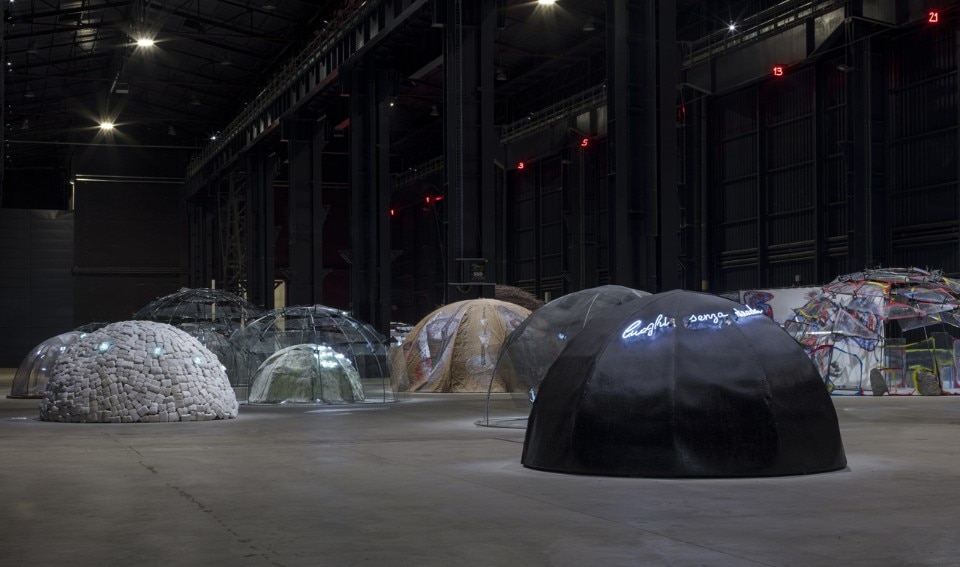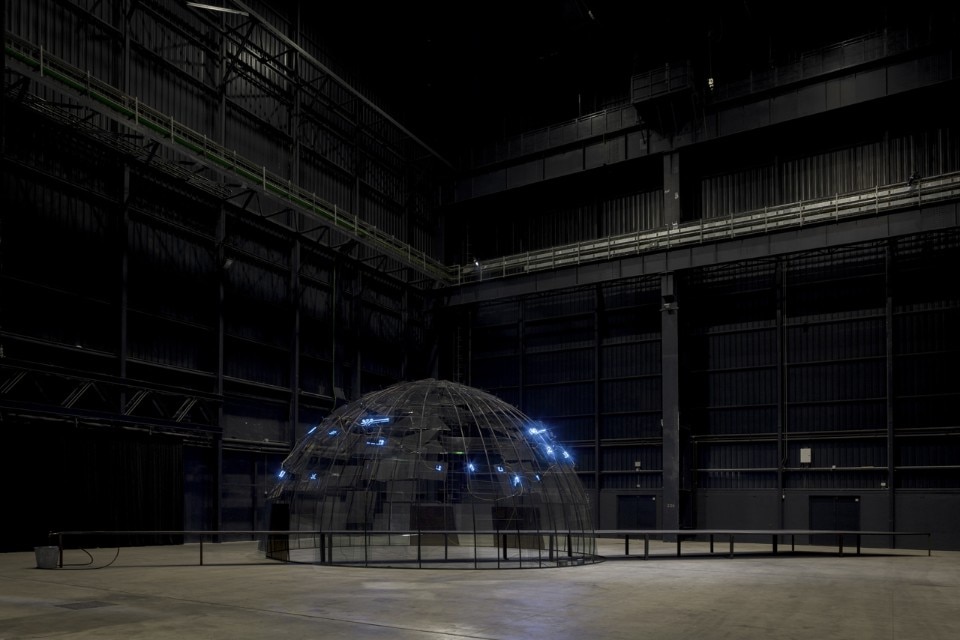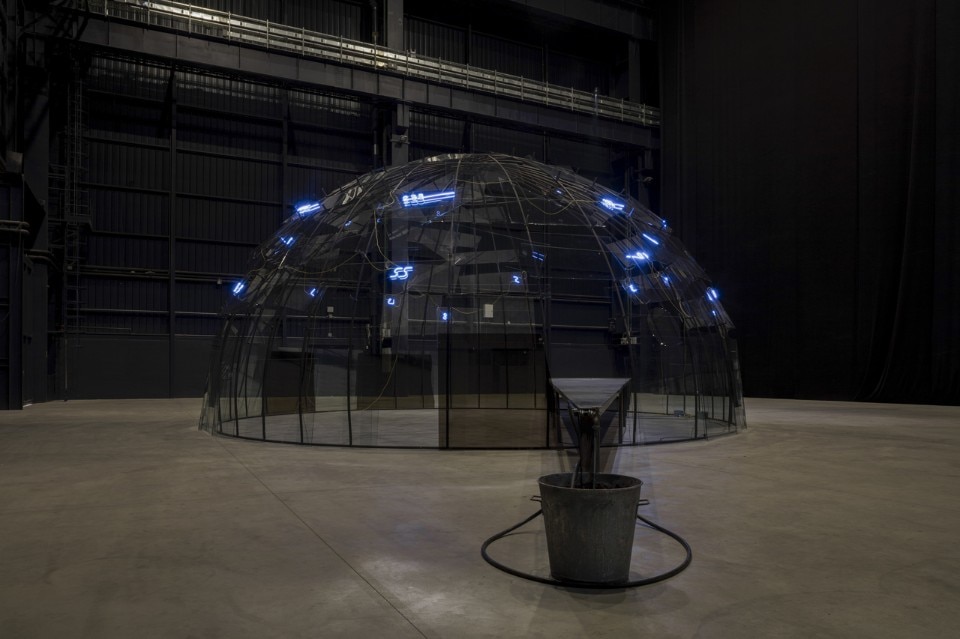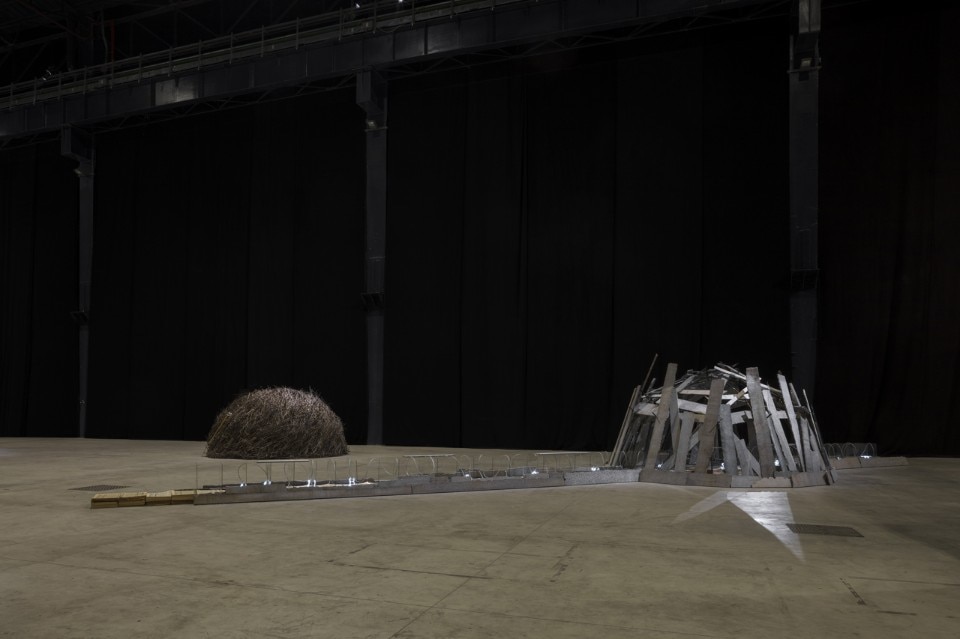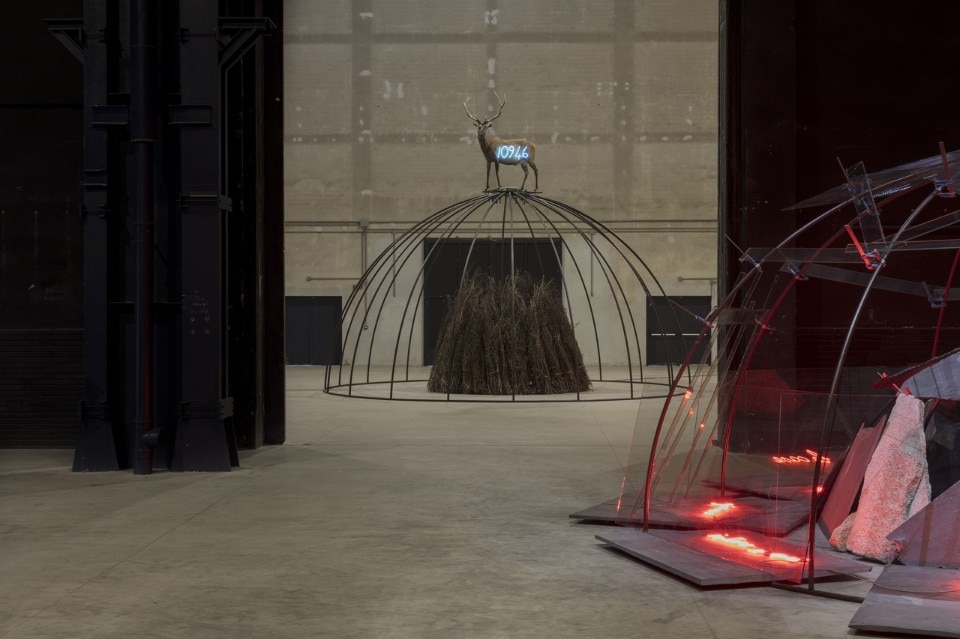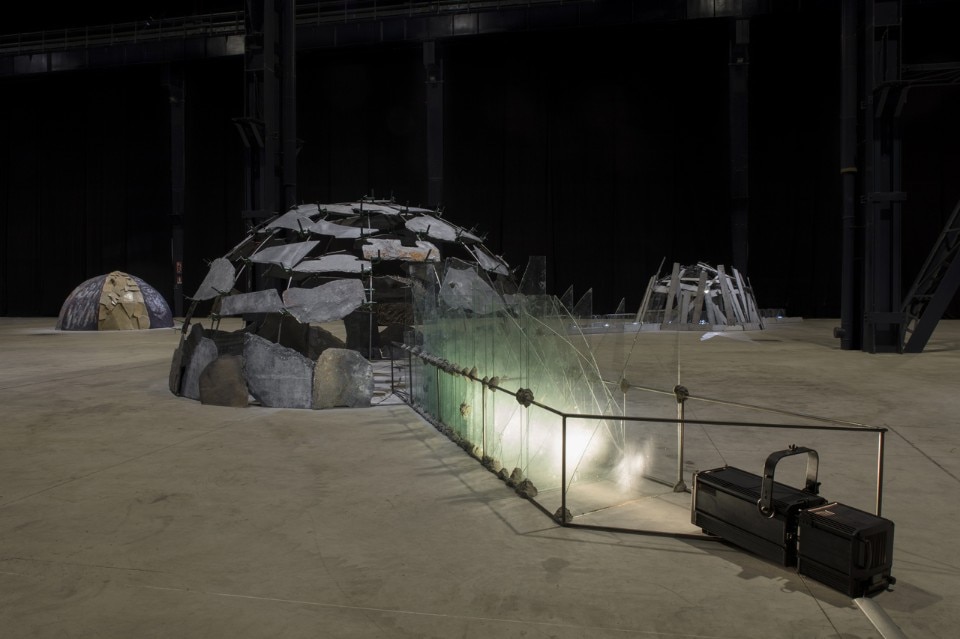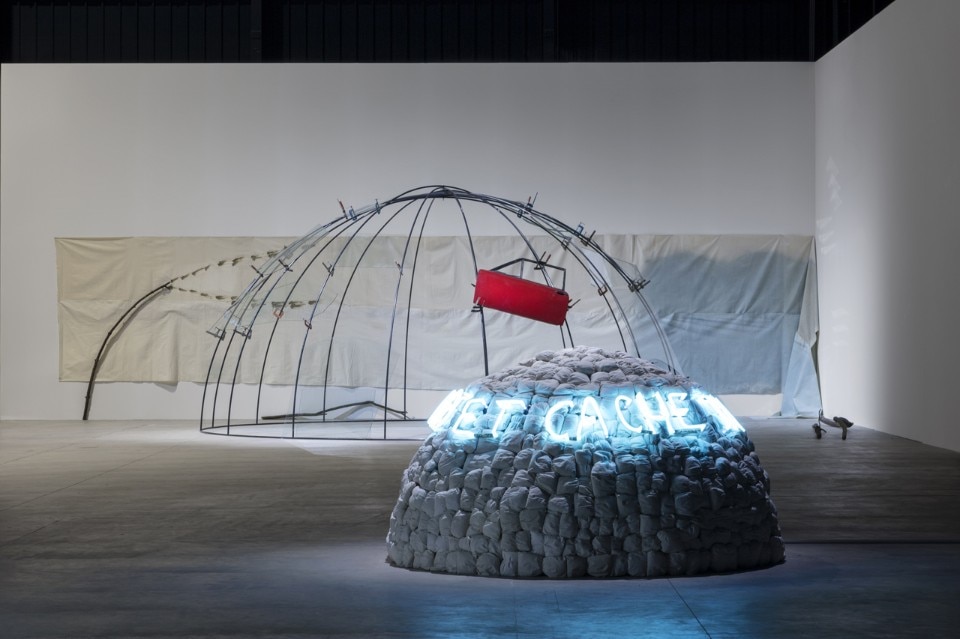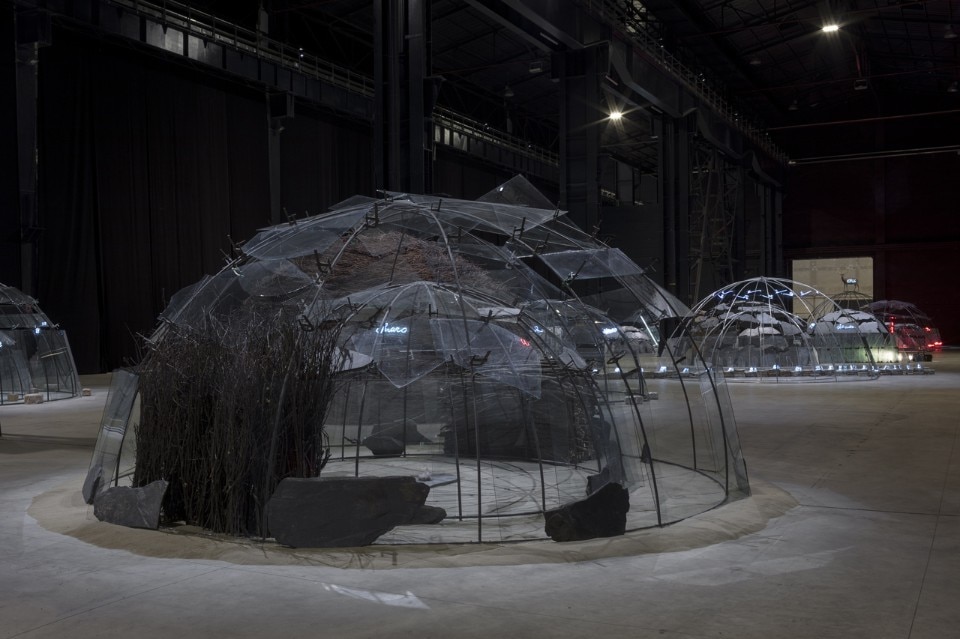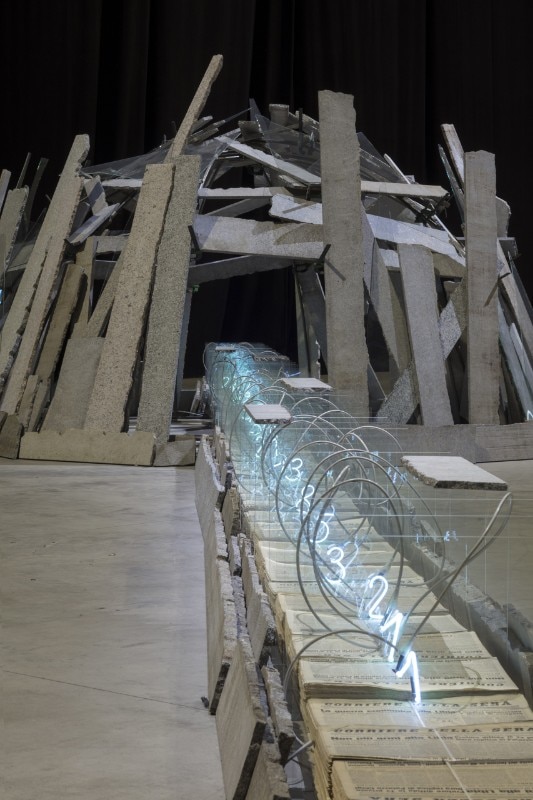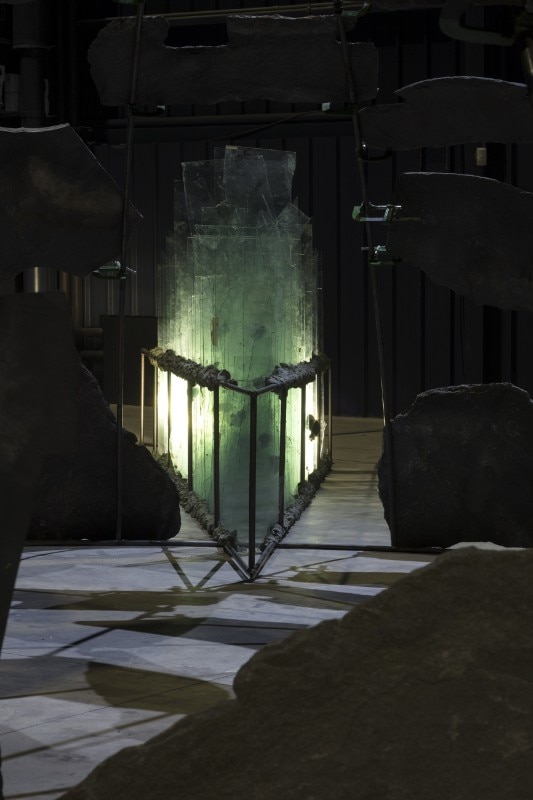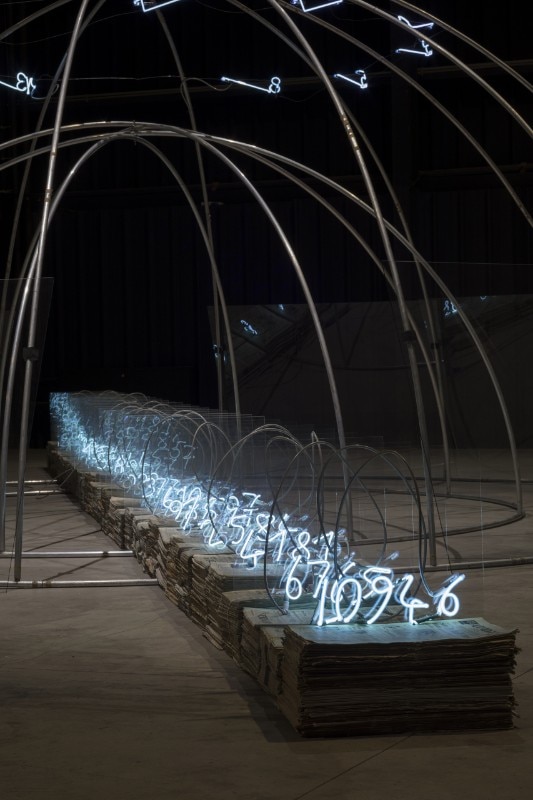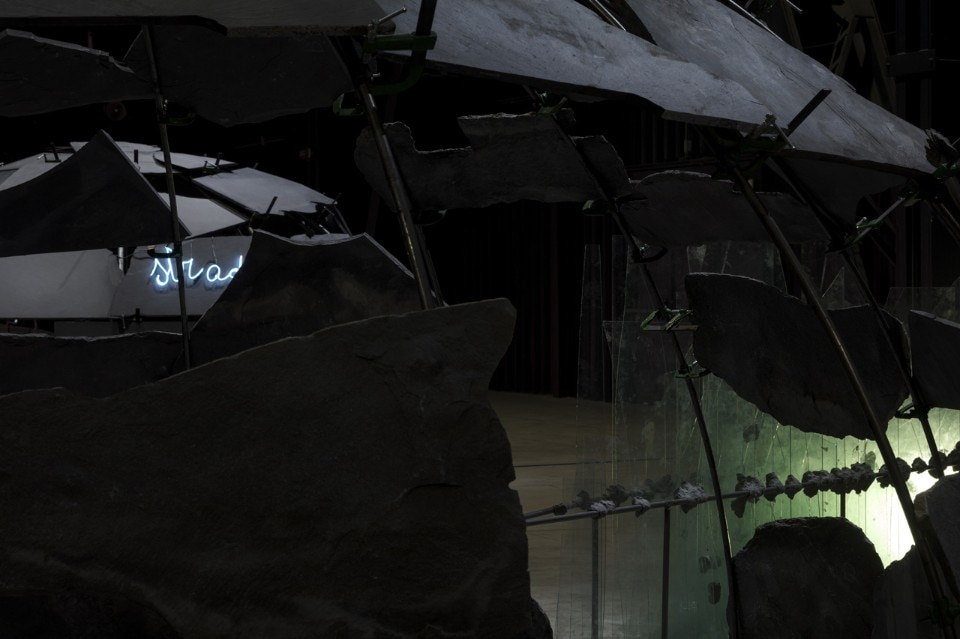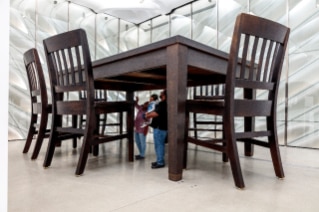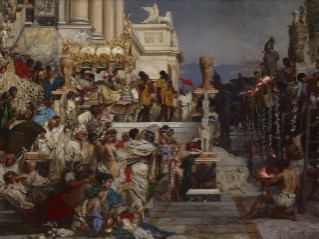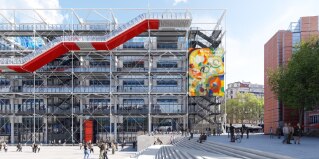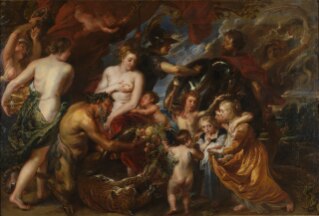It’s not Armilla, the city built entirely of water pipes. It’s not Valdrada “with stacked houses wrapped by verandas”. It is neither Ottavia, the spider-web city, nor Fillide with its great variety of bridges (from Invisible Cities by Italo Calvino, 1972). Here we have a small town, a village, an uninhabited camp composed of more than 30 igloos made by Mario Merz (1925–2003) from 1968 to the year he died.
The shape is always the same, yet each structure is different. The concentration and repetition in dozens of variants make for an urban agglomerate. Had Italo Calvino seen it (chronologically speaking, he could have seen a sample of this show in 1985), he might have thoroughly enjoyed it.
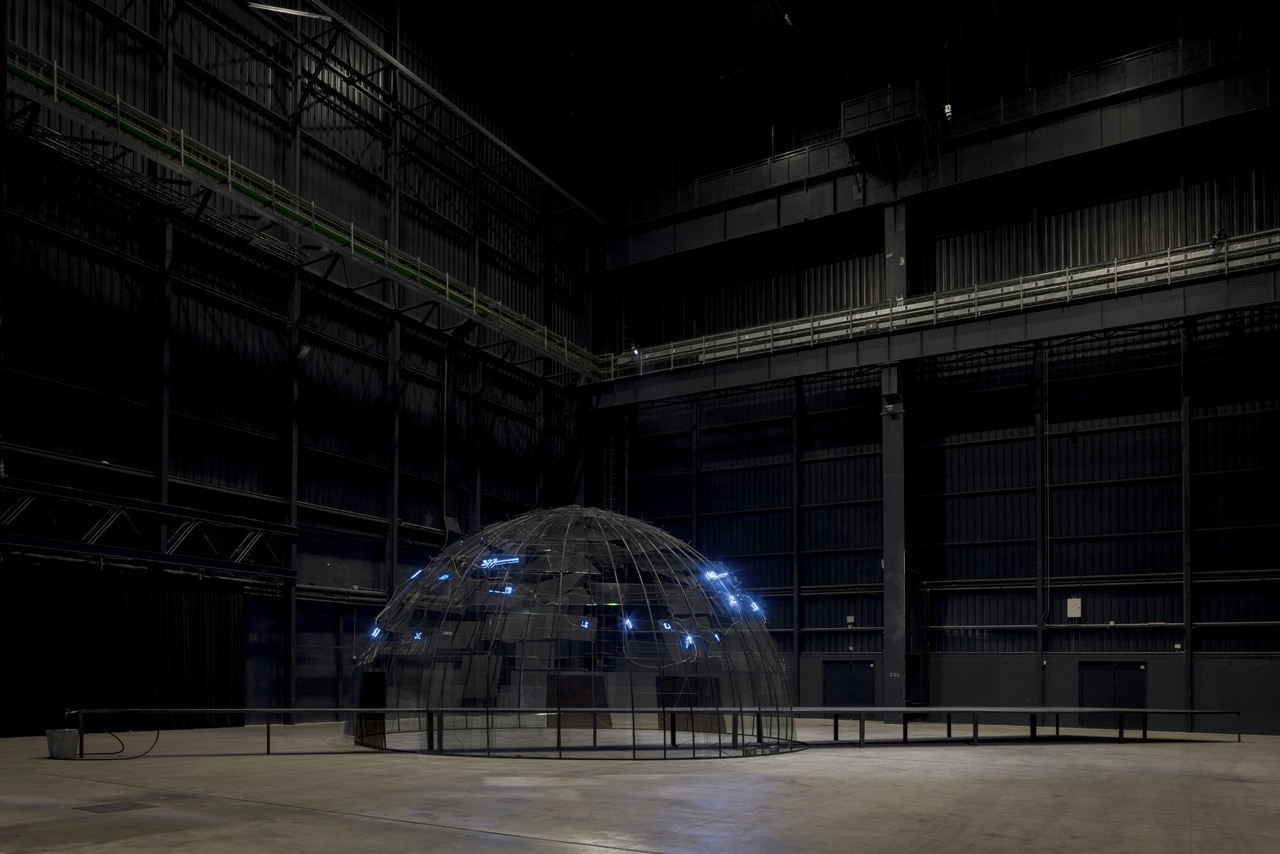
The apt description “city of igloos” might have been coined by the press during the first display of this series of works, organised in collaboration with Mario Merz by the late Swiss curator Harald Szeemann at the Kunsthalle Zürich in 1985. That was the first time all the igloos produced by the artist until then – a total of 15 – were gathered in one space.
Back in those days, a curator’s stamp on exhibitions was often predominant, and the question was raised what the actual role of a curator should be. Monographic exhibitions were prone to increase the intensity of this query. In the words of Harald Szeemann, unanimously recognised as having been a brilliant art curator, “The curator has to be flexible. Sometimes he is the servant, sometimes the assistant, sometimes he gives artists ideas of how to present their work; in group shows he’s the coordinator, in thematic shows, the inventor.” (from an interview in 1995, published by Hans Ulrich Obrist in A Brief History of Curating, 2008.)
The main merit of this show [...] is that it presents to us the work of a maestro – about which practically everything has been said and written – in such a surprising and unexpected way
The exhibition “Mario Merz: Igloos” is an overlapping of these categories. The show is at once a monographic retrospective and thematic. The curator Vicente Todolí has taken a precise series of work and embraced a seminal idea that came forth from collaboration between Merz and Szeemann in 1985.
The historical key in which the artwork is now approached 33 years later has incredible visual power, the result of an impeccable display. The chain of igloos is ordered chronologically and harmoniously in the space in such a way as to erase the unwieldy immensity of HangarBicocca.
Todolí, who has already gotten us used to the excellence of his curatorship, has hereby provided a remarkable answer to the question of what might be the fundamental role of a curator: his mission can only be accomplished by dint of lucid intelligence and access to the slow time required by research. The organisers have stated that this exhibition took two years of preparation.
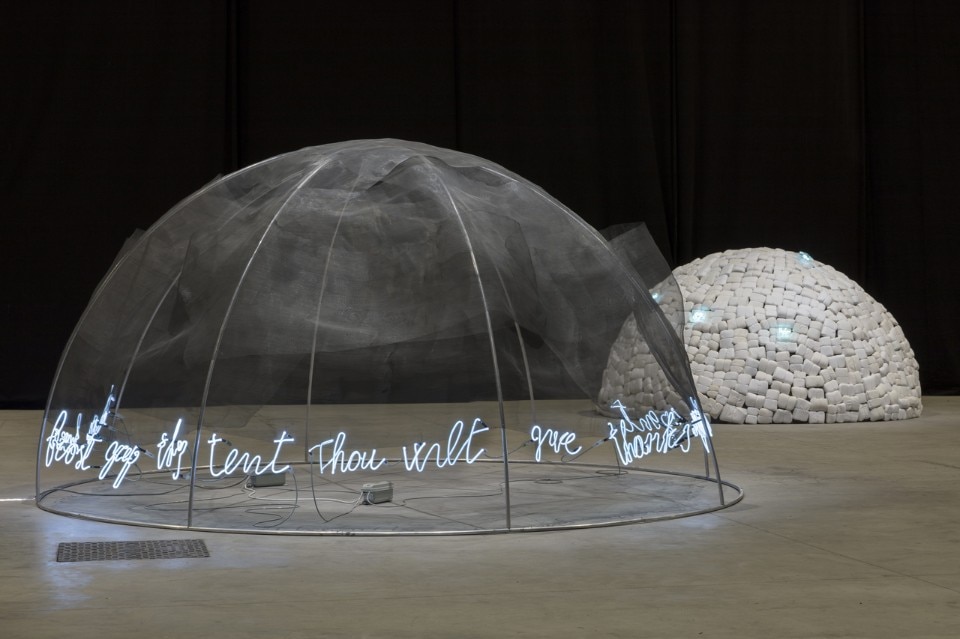
The exhibition’s pleasantness to the eye is just one consideration. The main merit of this show, and probably also of Szeemann’s in 1985 (in which case his task was presumably that of “giver of ideas”), is that it presents to us the work of a maestro – about which practically everything has been said and written – in such a surprising and unexpected way. This confers an impact so strong that it is difficult to imagine even for those who have seen Merz's igloos several times before (but singularly, for the most part) scattered over the collections of museums throughout the world.
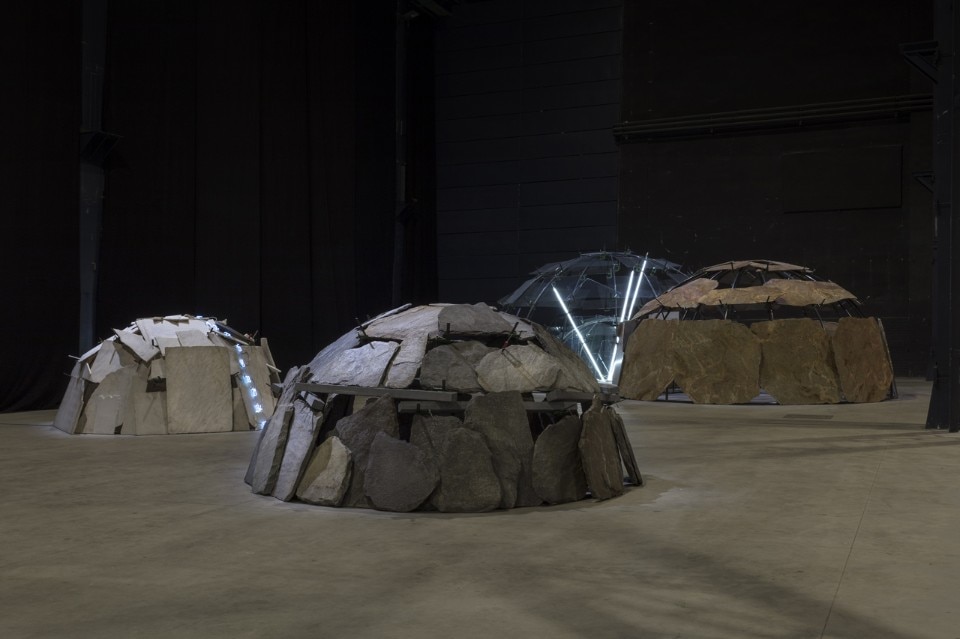
These architectural sculptures give the full impression of being the precarious assemblages that they in fact are. Representing an inhabitable space for people, they are made of diverse materials including glass, stone, fabric and clay. Often, the materials belong to the place in which the igloos were created. All have a hemispherical shape upon which other elements are grafted such as neon text, Fibonacci number series, natural elements like trees and animals, and tables.
For Merz, the igloos had symbolic value. “The igloo is a womb, and wombs can give birth to things,” said Merz. Here at HangarBicocca in collaboration with Fondazione Merz, an important, unmissable exhibition is born.
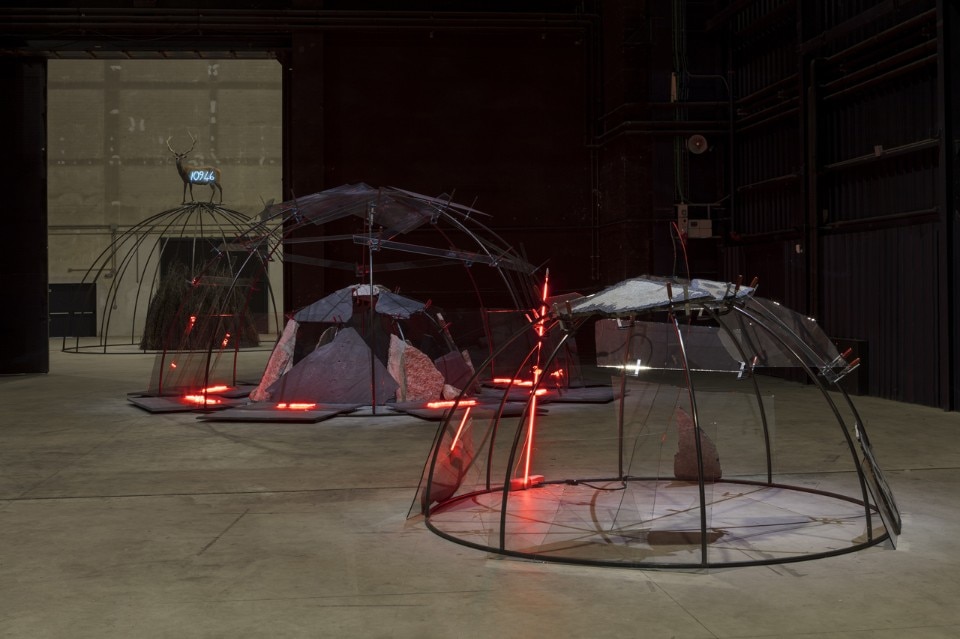
- Title:
- Mario Merz. Igloos
- Opening dates:
- 25 October 2018 - 24 February 2019
- Venue:
- Pirelli HangarBicocca, via Chiese 2, Milano
- Curator:
- Vicente Todolí


